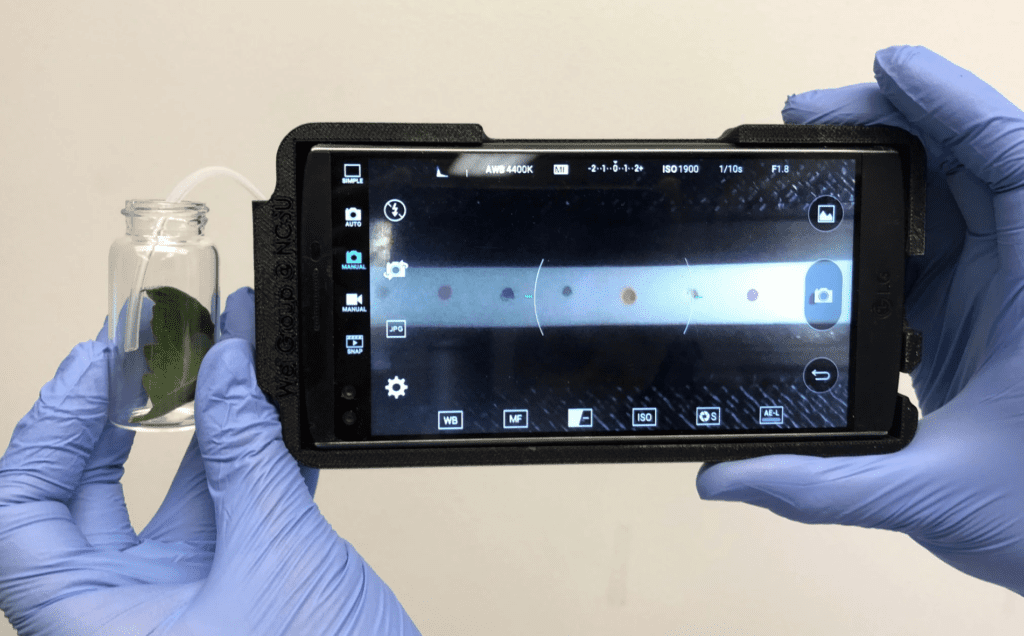Aug 29, 2019Smartphone test detects late blight
New technology developed by North Carolina State University researchers could allow farmers to cost-effectively test for plant diseases — such as late blight — right in the field using only a smartphone and a small plug-in device.
The technology works by using a smartphone plug-in reader to test for certain chemical profiles that a plant’s leaves emit when it is diseased. A leaf is placed in a small jar and covered. After about 15 minutes, the jar is uncovered and one end of the reader is placed inside with the leaf and the other is attached to the phone.
Inside the reader is a piece of paper that has been treated with nanoparticle sensors and dyes to turn a certain color to show the disease is present and another color for a negative test.
Late blight was targeted in the initial proof-of-concept testing runs for the technology. The tests also showed the reader could differentiate between late blight and early blight.
Detecting disease from chemical emissions from leaves isn’t new, but the way the NC State group is doing it is. One of researchers, Qingshan Wei, a biomolecular engineer, said the key advancement is nanoparticle sensory.
“Using nanoparticles, you can easily tune the surface chemistry,” Wei said, “so you can really design a BOC sensor that can be used to detect the target molecule you want to detect.”
Plans for commercialization
The prototype sensor, which was created using a 3-D printer, had a production cost of about $60. The disposable strips of treated paper only cost a few cents, which potentially makes the system cost-affordable for commercialization.
Don’t expect the product in stores anytime soon, however. Wei said more testing is planned, including in the field under real conditions. Researchers also want to test beyond fungal diseases.
“Late blight is more like a fungus-like pathogen,” Wei said. “We want test to see if we can use similar technology for (other infections). More frequently, plant infections are virus-based and we also (want to know) whether it can be used to detect a bacterial infection.”
The group also hopes to set up some demonstrations over the next year, and they’ll seek possible investing partners during that time, Wei said.
“We’re hoping within two to three years we can have a real product prototype,” Wei said.
– Zeke Jennings, VGN correspondent
Top photo: Zheng Li, assistant professor Agricultural and Resource Economics, North Carolina State University















